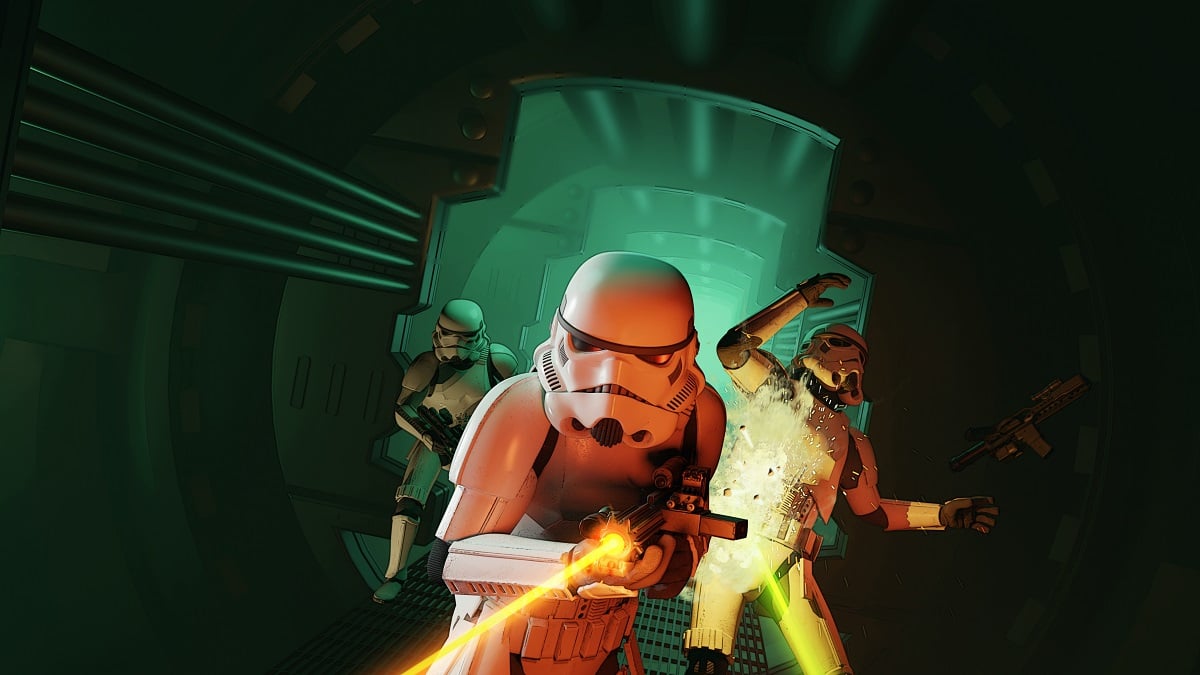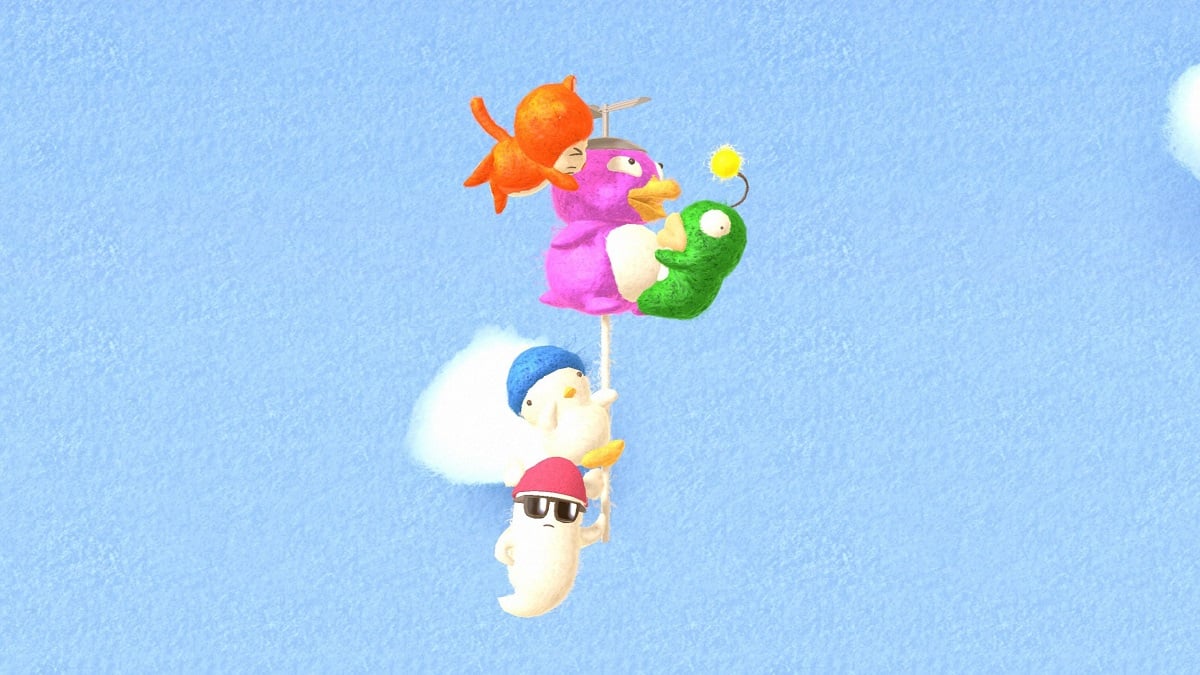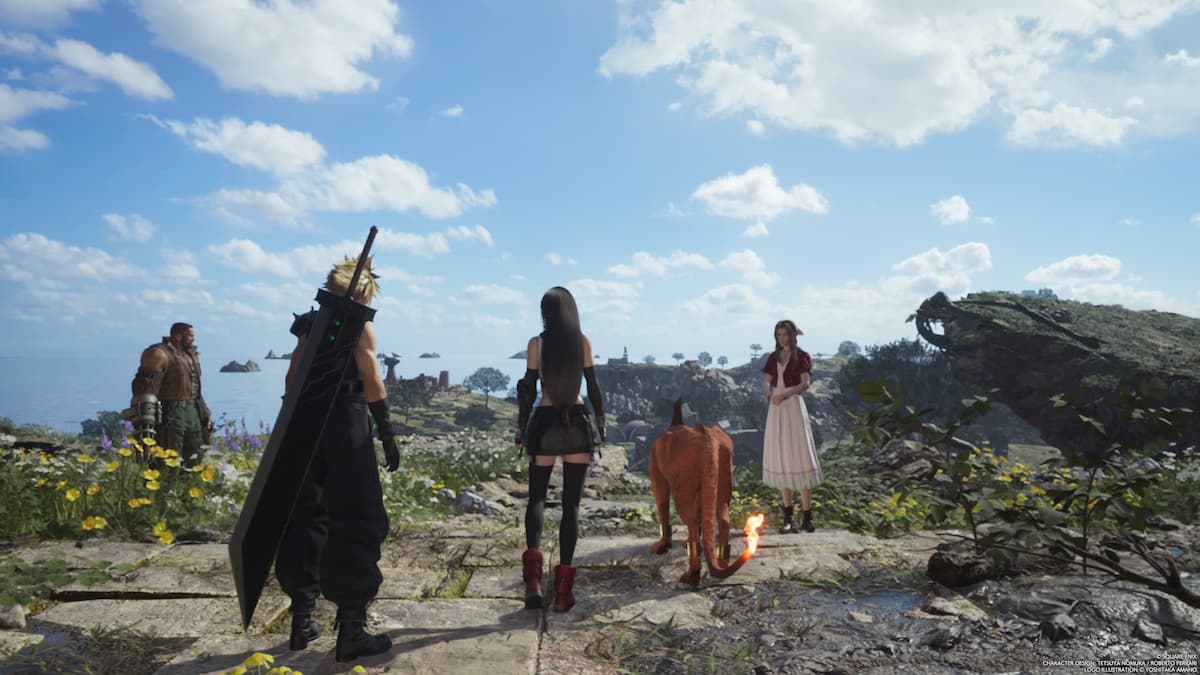The Good Life is going to test you. It posits an interesting question about whether or not speeding through life makes it a worse-off, more challenging experience overall. Incorporating real life, seemingly random punishments on top of innocuous activities and tasks, The Good Life can make even the most routine activities seem daunting through smaller annoyances that stack up on end. It leaves you questioning whether or not each system or meter incorporated into its blend of life simulation and RPG gameplay is intentionally made to cause as many issues as possible. The question posited ultimately has an unfulfilling answer.
Players fill the shoes of Naomi Hayward, a photojournalist who has racked up a mountain of debt and has been tasked by her employer with investigating a strange English town touted as being the “happiest” place in the world. Upon arrival, she learns that she not only has to figure out the mystery of the town, but she suddenly finds herself getting to the bottom of a murder mystery. She also has to figure out why she can transform into animals, and, still, all the while has to upload photos to social media and earn as much money as possible to pay back her debt while taking care of her daily needs.
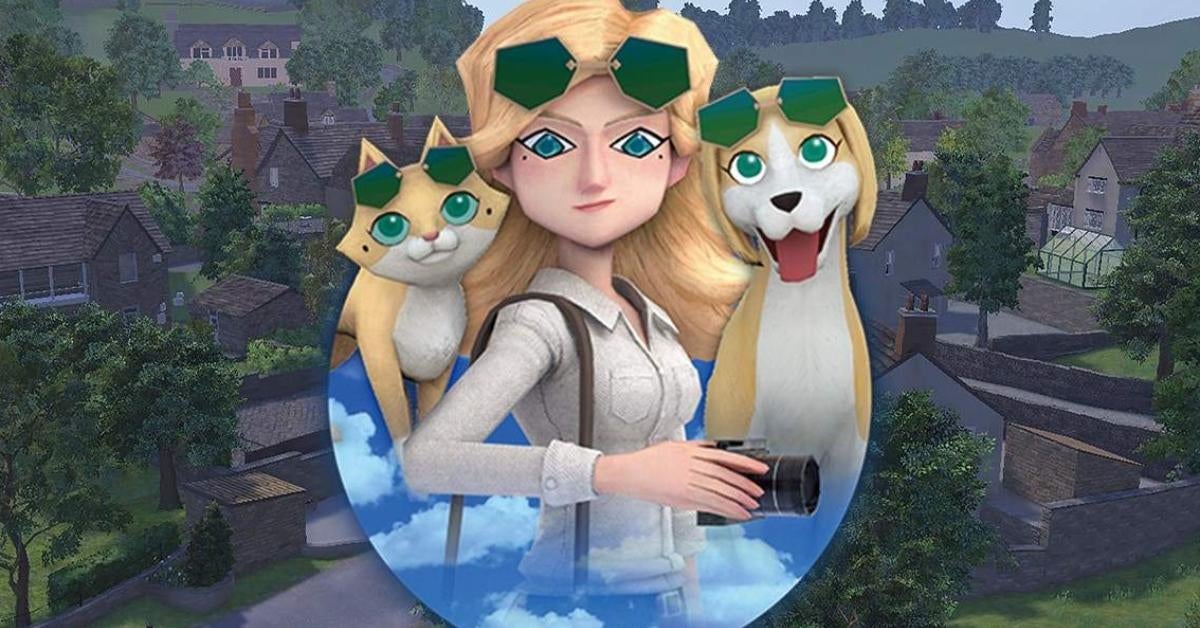
There’s a lot to manage here. The Good Life feels like it gets close to a real-life experience in that you’re constantly needing to juggle lots of worries at once. There are meters that range from highly consequential such as starvation, exhaustion, and stamina, to secretly consequential such as the charisma (which is maintained by Naomi showering and maintaining a “beauty” regimen every day) or stress. It’s not entirely cumbersome when you’re in the thick of it, nor is it as evolved as some of the deeper real-life simulators out there, but poor attention to any of these meters can make the overall experience worse.
Naomi can collapse from hunger or illness (which leads to a “game over” that results in costly hospital bills), or things in town can cost more as people are less willing to be around you. The main problem with paying attention to all of these at once is that not much of it is particularly explained well. It’s not enough to just monitor how much Naomi eats, but what she eats as well as the wrong types of foods can give you toothaches seemingly at random. Illnesses feel arbitrary (and will halve Naomi’s already weak stamina) as well because there’s not much you can actively do to avoid them. The same goes for managing the timing on her hunger and exhaustion.
Making matters even more inconvenient is just how tough it is to move around the town. It’s an open-world setup, but feels purposefully limited by walls that force Naomi to take the long roads from place to place. You can finally jump over them when you unlock the Cat transformation, but this even feels inconvenient because the cat can’t quite get over every single type of wall. And when you unlock the Dog transformation, you have to transform back into Naomi before you can transform into a cat. There are some walls the dog can’t jump over, either, so if you wanted to cut across a particular field, you’d need to transform into Naomi then transform into the cat with a small bit of waiting between each transformation.
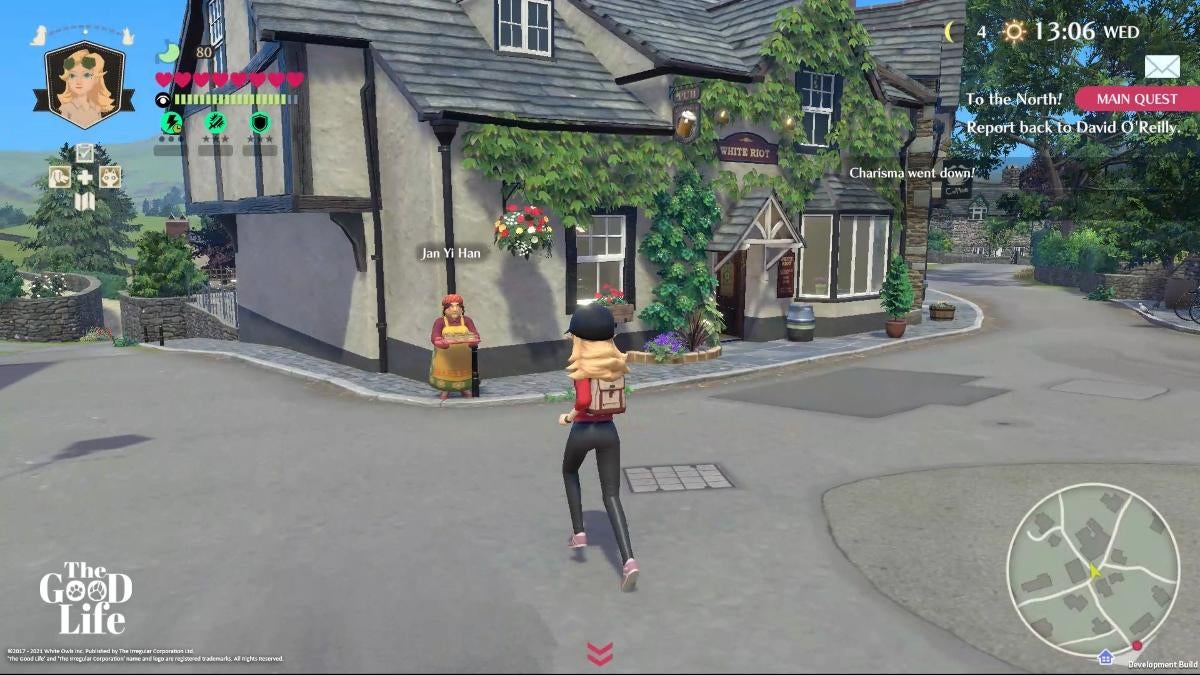
The real-life simulation elements get even more inconvenient when trying to get through the actual RPG part of the experience. There are main quests and side quests (of which you can only take care of one at a time), that can vary the further you dive in, but there are many that are just fetch quests. Naomi needs a certain dress, so she’s got to find certain pieces for it around town, for example. But then each of those pieces requires fetching another item of their own before you can get that first piece. During all of this, you have to walk or run (slowly, and on a stamina bar that needs a cool-down period) across long stretches of the town while your various meters are dwindling down.
On more than one occasion, I’d lose the streak on a main quest because Naomi had to travel all the way back to her home to sleep. There’s an option to warp Naomi home, but you lose energy doing so. There’s also a warping option around town, but it’s only active at various shrines you travel to and activate (costing a dollar) and it charges you money each time to warp. So it feels like The Good Life is punishing you for trying to make it through main quests at your own pace. Couple this with the fact that the townspeople and their services are inaccessible during night hours, and you’re locked within that rhythm at play.
It’s an RPG with the slow pace of a life simulator, and compounded by inconveniences that are either poorly explained or punishingly implemented. This is just in the gameplay and there are noticeable technical issues with the Nintendo Switch version of the release (which was played for review). There are slow-down periods, and it’s not a particularly great-looking title with its rougher edges. The art design is cute and the character designs are fun, but some of the text can be small and illegible (either playing in handheld or docked modes). Taking photos then feels less rewarding since everything has the same muddy quality anyway.
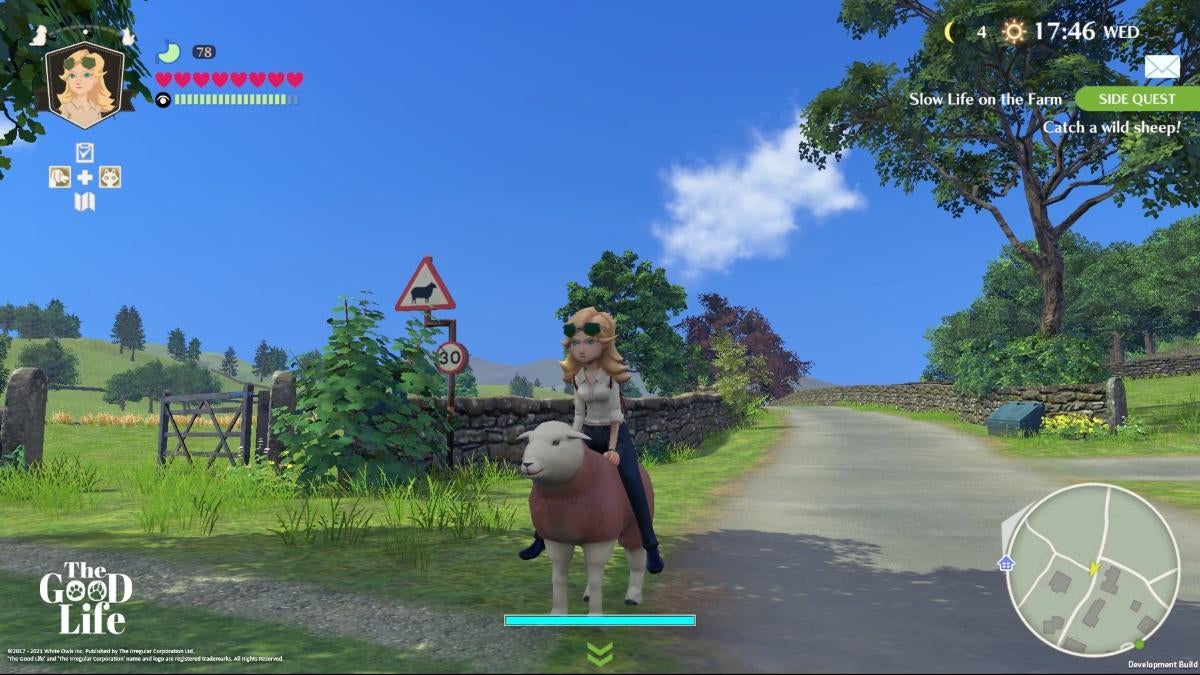
Unfortunately, The Good Life lacks in compelling story elements, in addition to its other shortcomings. Characterization is light (Naomi does make a fun lead for this kind of experience, though), and its kooky storytelling devices don’t really hold enough water to compel through all of those intentional and unintentional inconveniences. There are three story routes to investigate the central mystery, and because you can tackle them in any order, they don’t reference one another. There’s at least a climax for those fully invested and those wanting to completely dive into its main quest mystery while dealing with the clunky life-simulation elements, but it’s a lot to ask.
The Good Life, for better or intentionally worse, is full of hardships. It might be the kind of experience you’re looking for if you wanted a reflection of just how laborious life can be sometimes. That might not make for a very good life, though.
Rating: 2 out of 5
The Good Life is available now on Nintendo Switch, PlayStation 4, Steam, and Xbox One. A Nintendo Switch review code was provided by the publisher, and it was reviewed on a base model Nintendo Switch.
